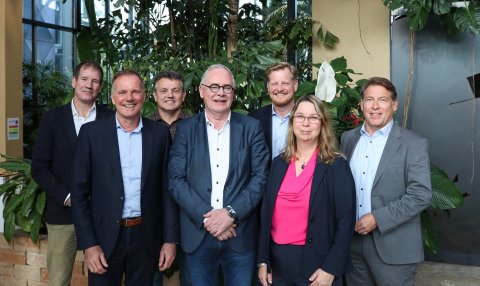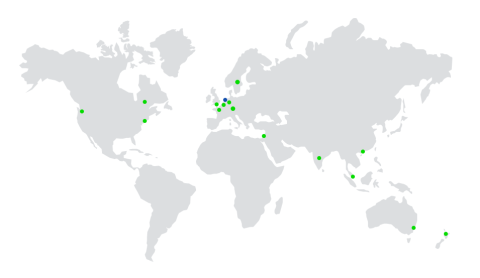
Planned Preventative Maintenance
What is planned preventative maintenance? Planned preventative maintenance (PPM) allows you to substantially reduce reactive maintenance and retain your buildings and assets in the desired or needed quality. Planned preventative maintenance is either time-based or condition monitored. Here we explore time-based maintenance vs condition-based maintenance.
Let’s explain time-based preventative maintenance. It is based on a fixed execution frequency of activities that generates a calendar schedule. A time-based maintenance schedule for an asset, equipment or building fabric is based on a library with maintenance activities and its pre-set frequency of execution for that asset. These frequencies can be based on warranties, supplier instructions, legislation or experience. An example of time-based maintenance is the yearly inspection of an air-conditioning unit, its three yearly filters cleaning and its six yearly filter replacement. Still time-based maintenance might be too late and causing reactive maintenance as the real condition of the asset is not taken into account. Or even too early or not necessary as it might be that the assets’ condition is better than expected.
Condition monitored preventative maintenance is a maintenance method aimed at predicting when an asset failure might occur and to prevent occurrence of that failure by performing the right maintenance. Condition monitored maintenance applies to assets that can communicate their actual status in real-time to your maintenance system (IWMS, CAFM, CMMS) where threshold values and pre-set parameters forecast the type and timing of maintenance. This monitoring allows a just-in-time maintenance that minimises maintenance costs and prevents asset failure and associated reactive maintenance efforts. An example of condition monitored maintenance is a pre-set threshold for your heating installation. When the temperature of the installation exceeds this threshold value, a preventative maintenance activity is generated to avoid failure. Or when operating hours exceed a pre-set value, the next maintenance activity is automatically scheduled at the right time.
Learn more about planned preventative maintenance

Planon Asset & Maintenance Management
Planon’s Asset & Maintenance Management solution minimises asset downtime and disruption while managing the entire lifecycle from start of use, to ongoing management, to removal or sale of asset.
Read more
Planon Mobile Field Services
Planon’s Mobile Field Services Solution helps you meet challenges by rapidly and securely providing your field service team with solutions they can use on iOS and Android devices. Request a demo now!
Request now
8 FAQ's about mobile solutions and automation for improved maintenance operations
In this FAQ, we explore questions many organisations have about improving their maintenance operations, and how Planon’s IWMS and mobile applications can support your organisation in achieving greater maintenance management efficiency and success.
Read moreBenefits and application of time-based maintenance
So what are the main planned preventative maintenance advantages? Planning is the biggest advantage compared to unplanned and reactive maintenance. Reactive maintenance has many overhead costs that can be avoided during the planning process. The cost of unplanned maintenance include lost production, business effects of downtimes, higher costs for parts, as well as time lost in responding. Market benchmarks indicate that unplanned maintenance typically costs three to five times more than planned maintenance. When maintenance is planned in advance, equipment can be shut down outside production hours to minimise the impacts on business activities. Prior to the shutdown, any required parts, supplies and staff can be gathered to reduce the time taken for the execution. All these measures decrease the total cost of the maintenance. As well as cost reduction, business continuity is improved thanks to PPM as assets break less often and will have less failure in operation.
Compared to condition monitored maintenance, time-based maintenance does not require a specific monitoring strategy. This also eliminates the need and costs to interpret the actual condition data and act on the results of that interpretation. However as a result, the disadvantage of time-based maintenance is that maintenance may occur too often or not enough.
Suitable assets for time-based preventative maintenance include those that have a critical operational function, have failure modes that can be prevented with regular maintenance and that have a likelihood of failure that increases over time.
Benefits and application of condition monitored maintenance
Condition monitored maintenance, also known as predictive maintenance, aims at predicting when an asset failure might occur and when maintenance is needed. The goal here is to prevent occurrence of the failure by performing the required maintenance just-in-time. Ideally, condition monitored maintenance allows the maintenance frequency to be as low as possible to prevent unplanned reactive maintenance and to reduce costs associated with too soon time-based maintenance.
Condition monitoring can be done with several techniques but implies that assets can communicate in real-time their actual status with your maintenance management system. Example of statuses are temperature, operating time, energy consumption, production counts, error codes, or any other value that allows to predict a failure or the urge for maintenance. Choosing the correct technique for condition monitoring is an important aspect that needs to be looked at with the help of equipment manufacturers and maintenance experts.
Suitable assets for condition monitored maintenance include those that have a business critical operational function, have failure modes that can be cost-effectively predicted with real-time monitoring, and that have a likelihood of failure that is related to other dimensions than time based only.
Planned preventative maintenance (PPM) software and maintenance management software
Planned preventative maintenance is more complex to coordinate than reactive maintenance simply because the maintenance schedules must be known upfront and activities need to be planned and executed in time. Condition monitored maintenance is even more complex than time-based maintenance as it needs the implementation of a monitoring strategy and real-time connection of the associated assets.
In either case, a maintenance management software solution like IWMS, CAFM or CMMS is more than necessary. When maintenance is planned and tracked by using paper or Excel, it is impossible to evaluate maintenance scenarios, plan activities and budgets, or manage costs of execution. Maintenance management software help managers in monitoring properly the quality, costs and compliance of maintenance. Maintenance staff and field engineers have real-time access to their work orders, documentation and schedules; no work orders are lost, work is more efficiently scheduled, work is executed quicker and safely whilst being compliant.
Compared to Computerised Maintenance Management Software (CMMS), Integrated Workplace Management Systems (IWMS) offer maintenance management solutions as an integrated part of a complete suite of real estate and facility management processes. This allows organisations to connect preventative maintenance with other processes in sustainability management (energy monitoring, LEED or BREEAM assessments), space & workplace management (utilisations, occupancies), services management (outsourcing, maintenance contracting) and real estate management (portfolio analyses, benchmarking).
Planon Mobile Field Services video
Global success stories

King's College London
Elizabeth Harris, Business Information Systems Manager: 'The solution allowed us to reduce our maintenance backlog by 50% within three months.'
Explore now
Carglass®
Frank Roosen, Facility Manager: “Customer delight and business continuity with Accelerator.”
Explore now
Brown University Selects Planon’s Facility Management Technology
Brown University (United States) has taken a major step forward with initiatives to enhance facility management across its campus through the selection of Planon’s integrated workplace management system (IWMS).
Read more



















